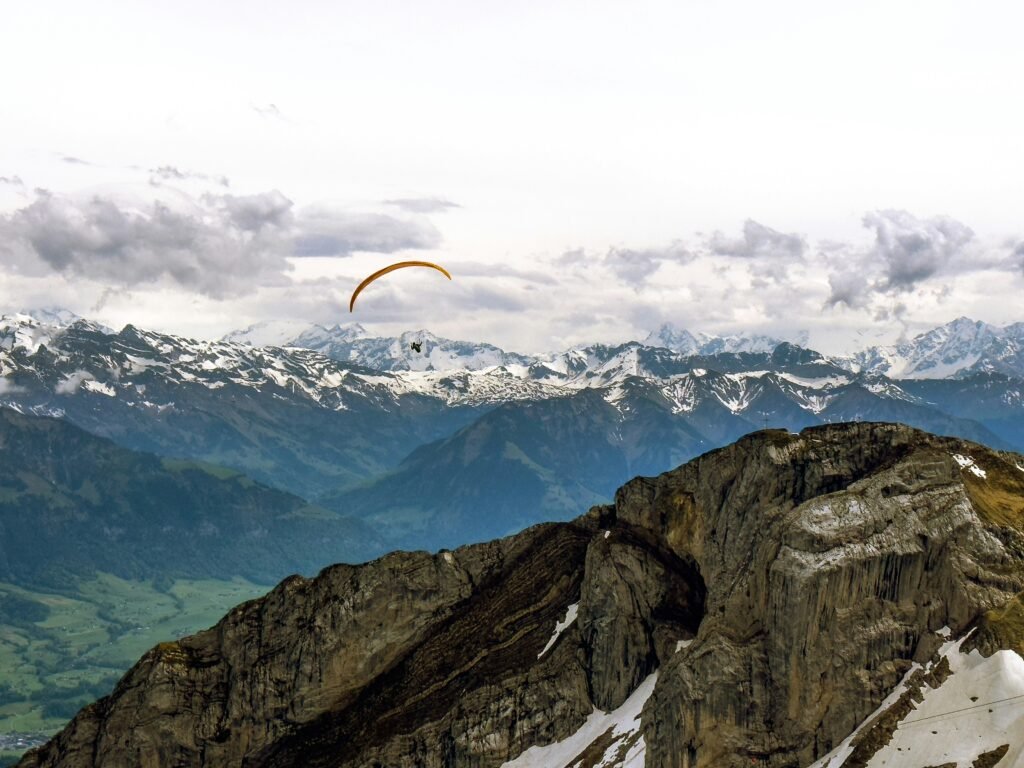If you’ve ever watched someone paragliding—calmly floating through the sky, high above the hills—you’ve probably thought, “That looks amazing… but also kind of terrifying.” And that’s fair. Flying with no engine, no cockpit, just a wing and the wind? It sounds scary.
But here’s the truth: paragliding is far less scary than most people imagine. In fact, many first-timers are shocked by how peaceful, gentle, and even relaxing it feels once they’re in the air.
Short Answer
Paragliding can feel scary before takeoff, but once you’re in the air, it’s surprisingly calm and peaceful—there’s no falling, no stomach drop, just gentle gliding. Most people lose their fear within seconds and feel amazed by the experience. The idea is scarier than the reality.
Tip: Is paragliding good or bad for you ?
The idea is scarier than the experience
The scariest part of paragliding usually happens before you even leave the ground. You imagine the height. You worry about falling. Your brain plays out every possible “what if” scenario. That’s normal.
But once you’re strapped in, standing on the takeoff slope with your pilot, and the wing catches the wind… fear gets replaced with focus.
Then you lift off—and realize: “Wait… this isn’t scary. This is amazing.”

Tip: What is paragliding?
Takeoff: a quick rush, then calm
This is the only part that feels a little intense—the takeoff.
You run forward with your pilot (if it’s a tandem flight), the wing rises behind you, and the wind gently lifts you into the air. Your feet leave the ground—and your heart might leap for a second—but there’s no drop, no sudden jolt.
You go from standing to floating in a matter of seconds. And almost instantly, the fear turns into awe.
Freefall? Nope, not here
One of the biggest misconceptions is that paragliding feels like falling—but it doesn’t. Paragliding is not skydiving. There’s no freefall, no stomach-dropping sensation, no high-speed rush. Once you’re airborne, it feels like gliding, like you’re being cradled by the air. Think of it more like floating or gently soaring—because that’s exactly what it is.
Tip: Paragliding VS skydiving compared
The fear of heights: does it matter?
You’d think paragliding would be terrifying for people afraid of heights—but surprisingly, many say it’s not.
Why? Because once you’re in the air:
- You don’t have a ledge or railing to trigger vertigo
- The motion is smooth and controlled
- You’re focused on the view, not the drop
It feels different than looking down from a building or standing on a cliff. It doesn’t feel unsafe—it feels spacious and calm.

Tip: How much does base jumping cost?
Tandem flights = total support
If it’s your first time, you’ll fly tandem—strapped to a trained pilot who does everything. They control the wing, handle the takeoff and landing, and guide the entire flight. So even if you’re nervous, you’re not alone. Your pilot’s job is not just flying—it’s also helping you feel safe, informed, and comfortable.
They’ve flown hundreds (or thousands) of times. They know how to keep it smooth. And they’ll talk you through every step of the way.
Can you panic in the air?
Of course it’s possible—but it’s rare. And if it does happen, it usually fades fast.
Here’s why:
- The environment is calming—no engine noise, just wind
- You’re securely strapped in
- You’re not falling or spinning
- Your pilot will check in and keep things steady
Most people say their fear vanishes within seconds of takeoff, replaced by a mix of joy, calm, and amazement.

Tip: What is a tandem jump in skydiving?
The real emotion? Surprise and wonder
People expect fear. What they usually get is:
- Awe: “I can’t believe I’m really up here.”
- Calm: “It’s so quiet and smooth.”
- Gratitude: “This is one of the best things I’ve ever done.”
Paragliding isn’t just a thrill—it’s a perspective shift. It changes how you feel, not just what you see.
Final thoughts: fear fades, flight stays
So, how scary is paragliding? A little, at first. But only until your feet leave the ground. After that, it’s not fear—it’s freedom. If you’re nervous, that’s okay. You’re human. But if you’re brave enough to try, you might just find that the scariest part was overthinking it.

